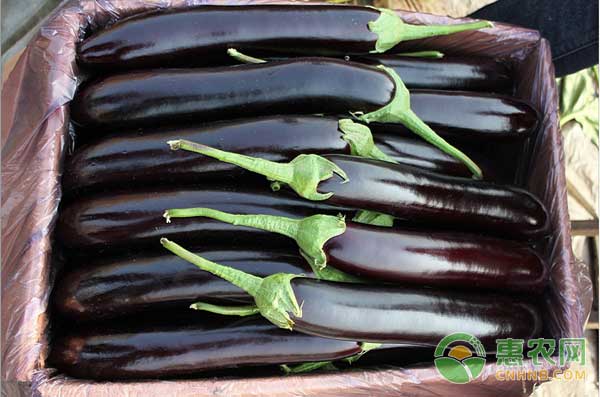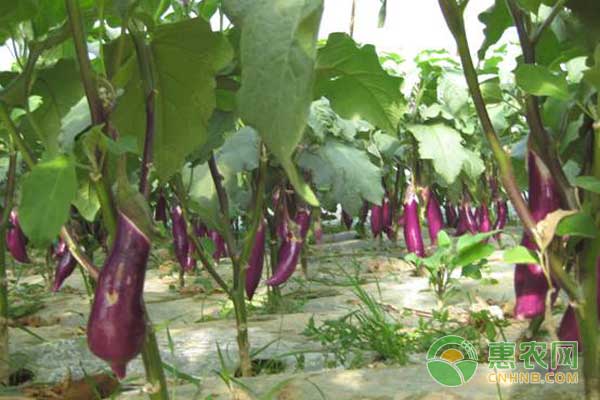Eggplant is widely cultivated in China and is one of the common vegetables. The leaves of eggplant are large, so they are mostly thin. In the early spring, the eggplant is used for encryption planting, and the short-cut regeneration cultivation technique can be adopted, and the continuous harvesting effect can be achieved by one seedling planting. The cultivation management techniques for encrypting and planting eggplants and inter-rowing are now shared as follows: 1 variety selection According to the needs of local people's living and consumption, or the requirements of the export flow, select the corresponding disease-resistant varieties, such as purple black round eggplant, purple black long eggplant, purple red long eggplant and so on. 2 sowing seedlings According to the weather conditions, it is appropriate to plant in mid-December, and cultivate seedlings with a seedling age of 100-120 days, a plant height of 15-20 cm, and 8-10 pieces of true leaves and thick stems. 2.1 Preparation before sowing 1 nutritious soil preparation of 8 parts of soil, 2 parts of fully decomposed cake fertilizer, 1 kg of potassium dihydrogen phosphate, 1 kg of superphosphate, 50% of carbendazim WP 2.0 g per 1 m3 of nutrient soil, if any condition It is good to add 50 kg of grass ash, mix well and sieve for use. 2 For nursery, every 667 m2 eggplant needs to be nursed for 20~25 m2. Firstly, use bamboo rafts to build a simple arch shed with a length of 2.0~2.5 m and a width of 6 m. The shed can be dug 2 rows of nursery carp in the arch shed. The depth is 10~15 cm and the width is 150 cm. The length depends on the situation. The 2 rows of nurseries and the two sides of the arch shed are each 1 m wide. 3 Packed with nutrients, filled with 10 cm × 10 cm of nutrients, filled with nutritious soil, and then discharged into the nursery, the nursery potted water was irrigated 1 day before sowing. 4 seed treatment in advance to dry the seeds for 1 to 2 days, with 60 ° C hot water for 15 min, add a little cold water, so that the water temperature is reduced to 30 ~ 35 ° C, soak for 10 ~ 12 h, remove the towel with a towel Excessive moisture, then wrapped in a wet towel in the environment of 28 ~ 30 ° C to germination, usually about 40 h budding. 2.2 sowing When the seeds are white, they can be sown, and 1~2 seeds are placed in each nutrient bowl. After sowing, the sieved fine soil is covered with 0.3~0.5 cm. After sowing, the white mulch is covered and then used for 2.8~3.0 m long. The bamboo poles are placed on the nursery with a small bow shed, covered with a shed film, and covered with grass shovel or insulation at night. 2.3 Seedling management 1 Temperature management before emergence, the insulation on the small arch shed should be exposed early and covered at night, as far as possible to keep warm; after emergence, early cover and cover, timely ventilation, to prevent the formation of high seedlings, daytime temperature control at 23 ~ 25 ° C, 13 ~15 °C; after the cotyledons are flattened, 28~30°C during the day and 15~17°C at night, enter the cold season. In principle, the heat preservation is the main, and the air can be properly ventilated according to the weather conditions; the ventilation will be increased 1 week before the planting. And remove the cover on the small arch shed for low temperature refining. 2 moisture management in the early stage of sowing, if the weather is fine, the daytime temperature is high, pay attention to ventilation and dehumidification, which is conducive to the prevention of seedling diseases. If the seedlings are short of water, they can be properly sprinkled in the sunny morning; when entering the winter, the water should be kept warm, after the weather is warmed up, according to Watering or sprinkling water for sensation and growth. 3 colonization 3.1 Soil preparation and fertilization In combination with the preparation of land, every 2 667 m2 of high-quality farmyard manure 2~3 m3, decomposed cake fertilizer 150~200 kg, ternary compound fertilizer 40~50 kg, it is best to adopt formula fertilization. 3.2 for sputum, cover mulch Adopting low-lying cultivation, the width of the ridge is 130 cm, the width of the groove is about 80 cm, the depth is about 15 cm, and the width of the ridge is about 50 cm. The groove is tightly covered with a white mulch of 90 cm width. 3.3 colonization According to the local climatic conditions and weather conditions, timely planting and planting, generally planted in late March and early April, planted 2 rows in the ditch, planting the soil of the seedlings and the ground in the ditch, the plant spacing is about 35 cm, Planted 2,930 plants per 667 m2, and planted a small bow shed immediately after planting, covering the shed film. 4 post-plant management 4.1 Temperature Management Generally, it is not ventilated within 3 days after planting, and the moisturizing and moisturizing is beneficial to slow down the seedlings. In the sunny day, the arch shed is maintained at about 30 °C. After the afternoon is lower than 28 °C, the air outlet should be closed in time, and the air should be kept warm at night; the rainy weather will be ventilated for a short time every day at noon, when the lowest night temperature is stable above 15 °C, The arched membrane can be removed. 4.2 Water and fertilizer management When planting, agglomerate the root water; 3~5 days after planting, the seedling water is poured, but not too much, the watering should be uniform, otherwise the seedlings will grow in different sizes and sizes; Watering, when the eggplant grows to the size of the egg, it starts to be watered. In combination with the watering, one layer of fruit is applied to apply the quick-acting compound fertilizer once, and each time 667 m2 is applied for 10~15 kg. 4.3 Guaranteed fruit When the eggplant is flowering, treat the first flower bud with high-yield agent No. 2, and add 0.5-0.7 kg of water to each bottle (package) of 8 mL. 4.4 Pruning and staging According to the pruning mode of the eggplant, the eggplant and the four mothers, one branch is left with two stalks for pruning, and the varieties with strong branching will have more than one branch and one pan and more flowers. It is necessary to remove the excess branches in time. Flower buds, leaving a large flower bud on one flower spike. Regenerated shoots of short-cut culture of eggplant plants (photographed in winter greenhouses, continuous low temperature), the top is wrapped in growth points After harvesting the stalks, choose to cut the lower aged leaves on a sunny day; according to the growth of the seedlings and the market sales, when the eggplants have four mothers or eight faces, leave 1~2 leaves on top of them. 1 row topping 1 row, after harvesting the eggplant to be topped, it will be cultured in a short section of 5~10 cm from the ground to regenerate the branches, leaving a strong bud after germination, and the excess is wiped out in time. According to the growth of the regenerated seedlings, the seedlings that have not been topped in the early stage will be topped at the appropriate time. After the harvesting of the eggplants, the regeneration results will be cultivated at a distance of 5 to 10 cm from the ground. This can be repeated twice or more. 5 pest control The diseases of eggplant mainly include verticillium wilt, gray mold, and sclerotinia. Verticillium wilt can be rooted with 50% carbendazim WP 500 times, or 75% methyl thiophanate (methyl thiophanate) WP 600 times; gray mold, sclerotinia can be used at 50% speed Keling (Pythium humilis) WP 1500 times solution or 50% chlorhexidine (isoflumuron) WP 1000 times spray control. The main pests are cotton bollworm and red spider. Helicoverpa armigera can be sprayed with 2.5% cyhalothrin emulsifiable concentrate 5,000 times solution; red spider can be sprayed with 1.8% avermectin emulsifiable concentrate 3,000 to 4,000 times. 6 harvest According to the local people's consumption habits and the flow of the market, the market is timely harvested. The above is the whole content of the cultivation management technology of eggplant encryption planting and interlaced head regeneration. This multi-harvest technology can increase the economic benefits of vegetable farmers! Greenhouse Plastic Plastic Clamps Greenhouse Plastic Plastic Clamps,Greenhouse Structure Connecting Clamps,Agricultural Greenhouses Clamps,Plastic Clamps JIANGSU SKYPLAN GREENHOUSE TECHNOLOGY CO.,LTD , https://www.engreenhouse.com

Non-polluted cultivation techniques for early and spring eggplant intercropping